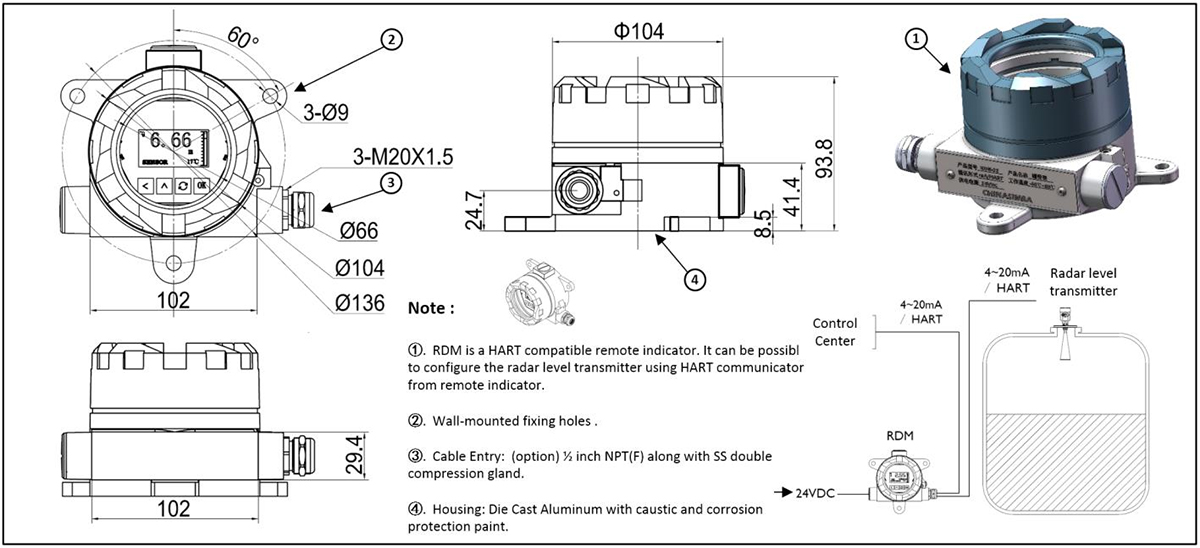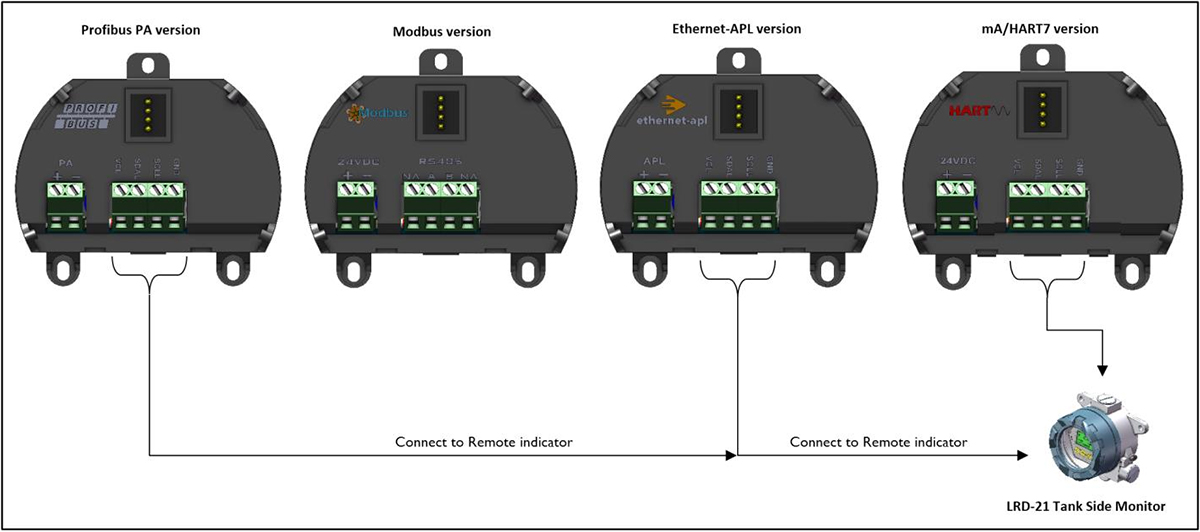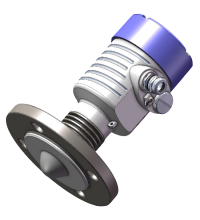Feature
Functionality Description
- Remote Indication and Configuration
- HART Compatibility: The tank-side gauge (such as the RDM model) is a remote indicator compatible with the HART protocol, allowing users to remotely configure and monitor the radar level transmitter via a HART communicator.
- Real-time Data Display: Displays real-time level measurements from the radar level transmitter, ensuring operators are kept informed about tank levels at all times.
- Communication Capabilities
- Enables data exchange with the radar level transmitter through the HART communication interface, supporting read and write operations for convenient parameter setup and data retrieval.
- Environmental Adaptability
- Designed with consideration for complex industrial environments, featuring dustproof, waterproof, and corrosion-resistant properties suitable for harsh operating conditions.

Installation
Installation Instructions
- Selection of Installation Location
- Install the tank-side gauge in a readily observable and accessible location, typically on a wall or column near the storage tank and with good lighting.
- Mounting Method
- Wall-mounted Fixing Holes: The tank-side gauge is equipped with wall-mounted fixing holes on its back. Use the provided mounting bracket and screws to securely attach it to the chosen location.
- Cable Connection
- Cable Entry: The tank-side gauge features a cable entry point that offers an optional ½ inch NPT(F) connection complete with a stainless steel double compression gland.
- Cable Attachment: Insert the signal cable from the radar level transmitter into the cable entry of the tank-side gauge and secure it using the double compression gland to ensure a reliable connection.
- Power Supply Connection
- Connect the appropriate DC power supply to the tank-side gauge based on its power requirements, ensuring stable and reliable power supply.
- Parameter Setup
- Use a HART communicator to connect to the tank-side gauge and configure the radar level transmitter according to actual needs, such as setting the measuring range, units, output signals, etc.
- Debugging and Testing
- Upon completion of installation, conduct functional testing to verify that the tank-side gauge correctly displays measurements from the radar level transmitter and communicates seamlessly with the HART communicator.
- Routine Maintenance
- Regularly inspect the tank-side gauge’s fixing to ensure no loosening or detachment.
- Clean the tank-side gauge’s surface to prevent dust and dirt accumulation from affecting display clarity.
- Regularly check cable connections for any looseness or damage.
Note:
- Strictly adhere to relevant safety operating procedures during installation and usage to ensure the safety of personnel and equipment.
- For any issues encountered, promptly contact technical professionals for assistance.
Dimensions






